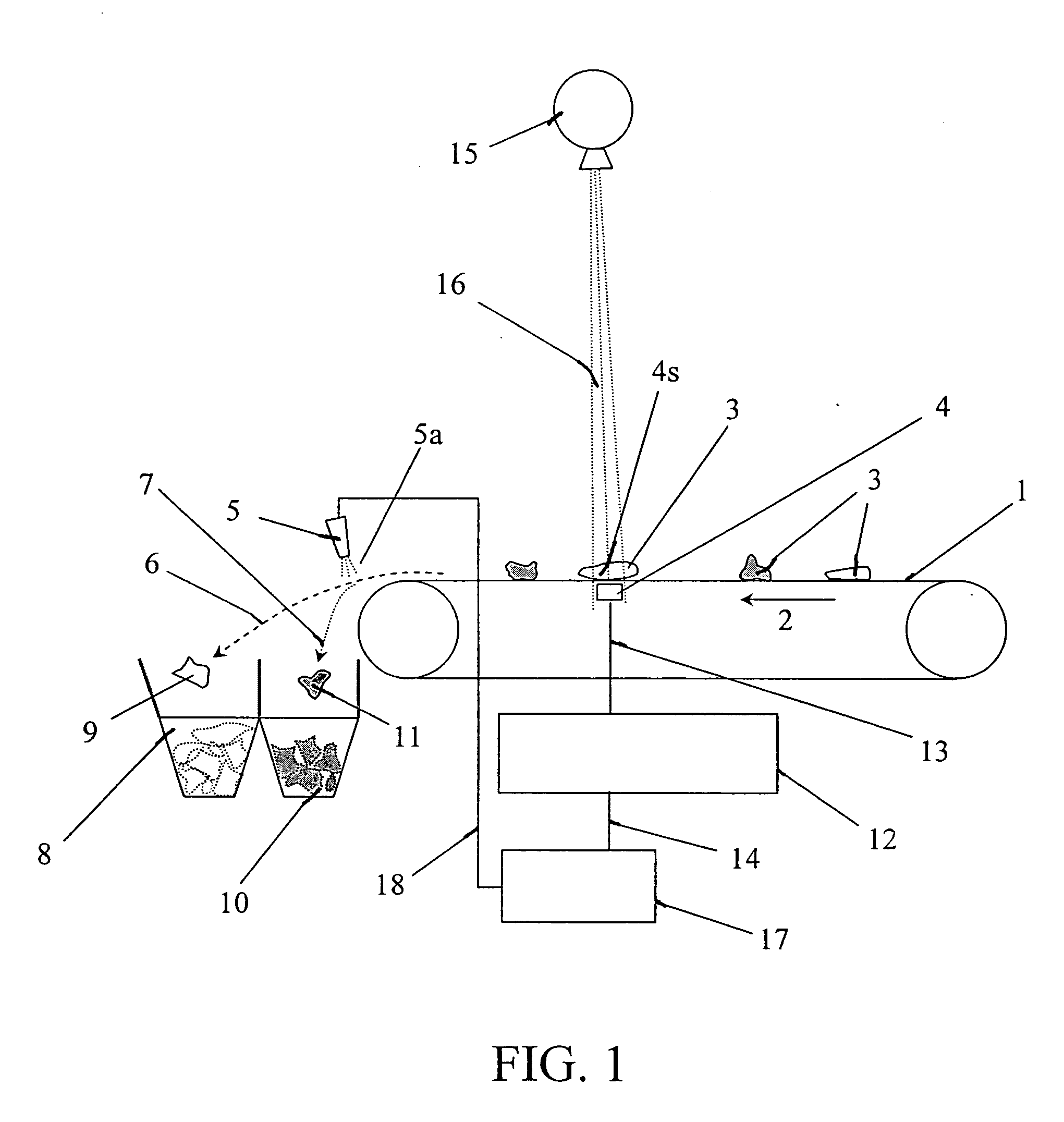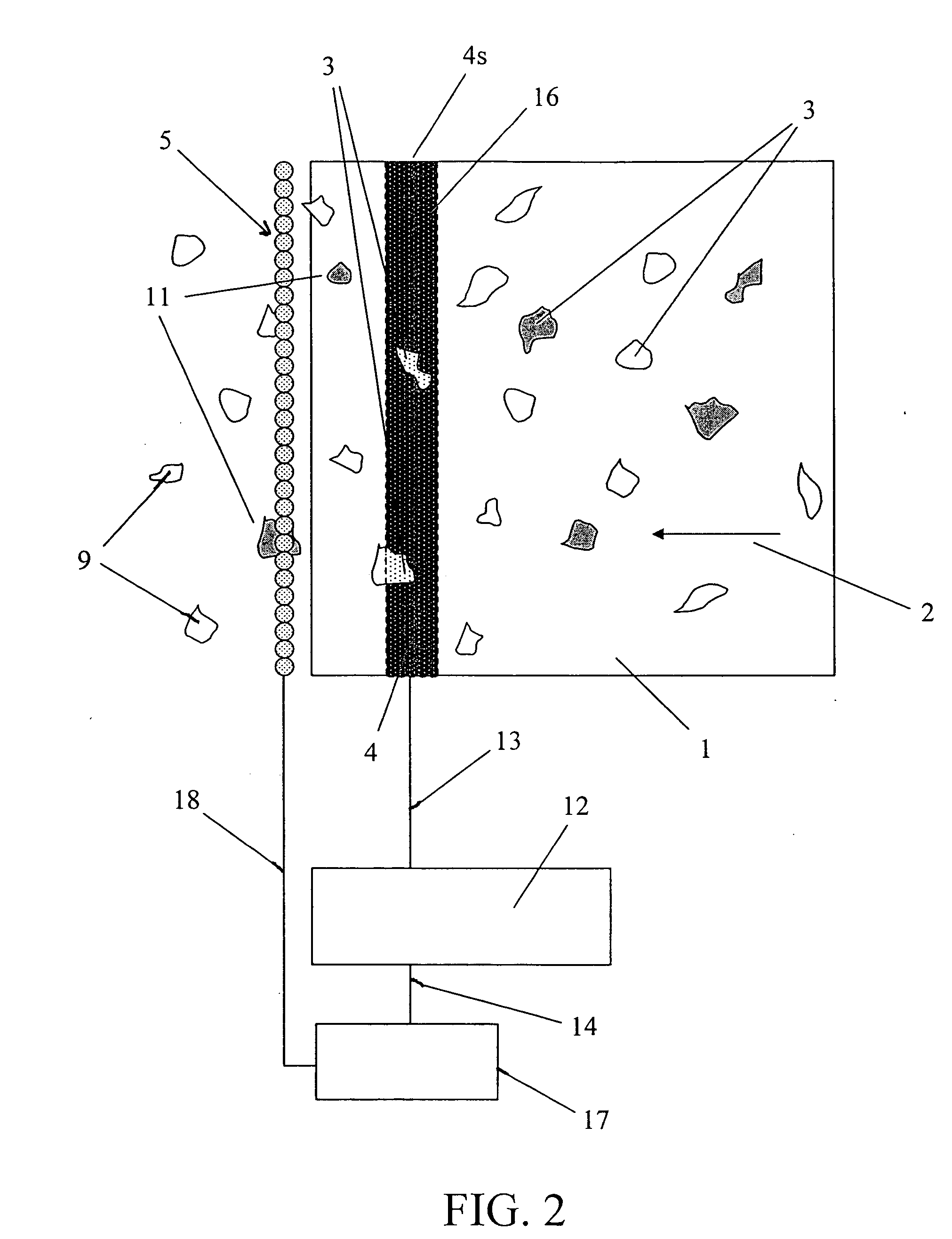Method and apparatus for sorting materials according to relative composition
a technology of relative composition and sorting method, applied in the field of scrap metal recycling industry, can solve the problems of high operating cost, high operating cost, and inability to meet the needs of environmental protection and low cost technology, and achieve the effects of reducing complications, reducing labor intensity, and reducing labor intensity
- Summary
- Abstract
- Description
- Claims
- Application Information
AI Technical Summary
Benefits of technology
Problems solved by technology
Method used
Image
Examples
Embodiment Construction
[0018] The present invention uses analyses of x-ray absorptions in a material at differing energy levels in order to determine the relative atomic density (atomic number Z) of the material. X-ray absorption in a material is a function of the atomic density of the material and also a function of the energy of the incident x-rays. A given piece of material will absorb x-rays to differing degrees depending upon the energy of the incident x-rays. Materials of differing atomic numbers will absorb x-rays differently. For instance copper (Z=29) will absorb x-rays much more readily than will aluminum (Z=13). Also the absorption profile of a given piece of copper over a range of x-ray energies will be different than the absorption profile of a given piece of aluminum over that same range of energies. X-ray transmission through a material is given by the equation
N(t)=N0e−ηρt
Where N(t) is the number of photons remaining from an initial N0 photons after traveling through thickness t in a mat...
PUM
| Property | Measurement | Unit |
|---|---|---|
| atomic numbers | aaaaa | aaaaa |
| energy | aaaaa | aaaaa |
| atomic number | aaaaa | aaaaa |
Abstract
Description
Claims
Application Information
 Login to View More
Login to View More - R&D
- Intellectual Property
- Life Sciences
- Materials
- Tech Scout
- Unparalleled Data Quality
- Higher Quality Content
- 60% Fewer Hallucinations
Browse by: Latest US Patents, China's latest patents, Technical Efficacy Thesaurus, Application Domain, Technology Topic, Popular Technical Reports.
© 2025 PatSnap. All rights reserved.Legal|Privacy policy|Modern Slavery Act Transparency Statement|Sitemap|About US| Contact US: help@patsnap.com



